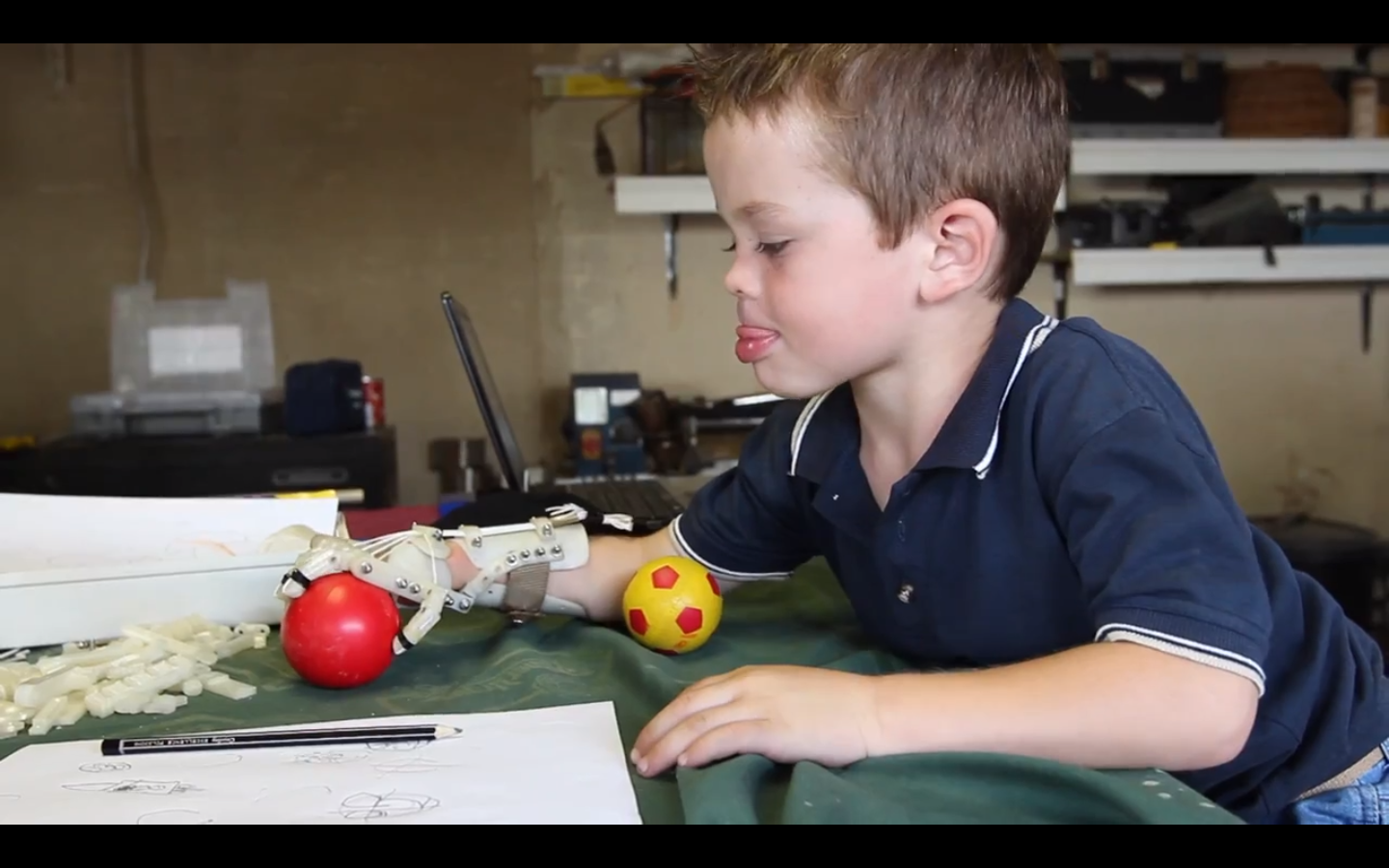While a lot of the focus on 3D printing these days is people can use it to take lives, the technology can be used to improve them as well.
One example of this is the Robohand, a prosthetic appendage created in part by a MakerBot 3D printer. The idea was born after Richard Van As, a South African woodworker, lost his fingers in an on-the-job accident.
Enter the 3D printer, Van As, along with prop designer Ivan Owen, used to create the Robohand, a $150 alternative to more expensive prosthetics.
With the invention, Van As and Owen could restore hand functionality to those afflicted with diseases like amniotic band syndrome, which causes children to be born without fingers and toes.
While there’s not much that I can tell you that the video below can’t say better, there are a few key takeaways here. One, while MakerBot has traditionally shown off the Replicator’s capability to print out a variety of rather useless widgets, it’s clear that the technology has use cases that extend far beyond that. 3D printing can — and clearly, has — changed lives.
Also, as Van As points out in the video, 3D printing was vital to the creation of the Robohand, which the designers were able to prototype much faster thanks to MakerBot’s technology.
“The Makerbot and being able to swap files up and down via the Internet cut our prototyping down from a week to 20 minutes. It was incredibly fast,” he said.
More notably, Van As and Owen placed the Robohand’s design files on Thingiverse, MakerBot design file repository. The move means that anyone with access to a 3D printer can download the files and create their own Robohand (though Van As recommends consulting an occupational therapist to help with the fitting of the device).
As amazing as the project is, it’s not the first of its kind. Last year a Delaware hospital developed a 3D printed exoskeleton for a 2-year-old born without use of her hands. The project, like this one, shows that there are uses for 3D printers that not even their inventors have thought of yet.
And while some have taken that idea an applied it to firearms, others are going in a different, but equally interesting direction. And we can only applaud them for that.
VentureBeat's mission is to be a digital town square for technical decision-makers to gain knowledge about transformative enterprise technology and transact. Learn More

